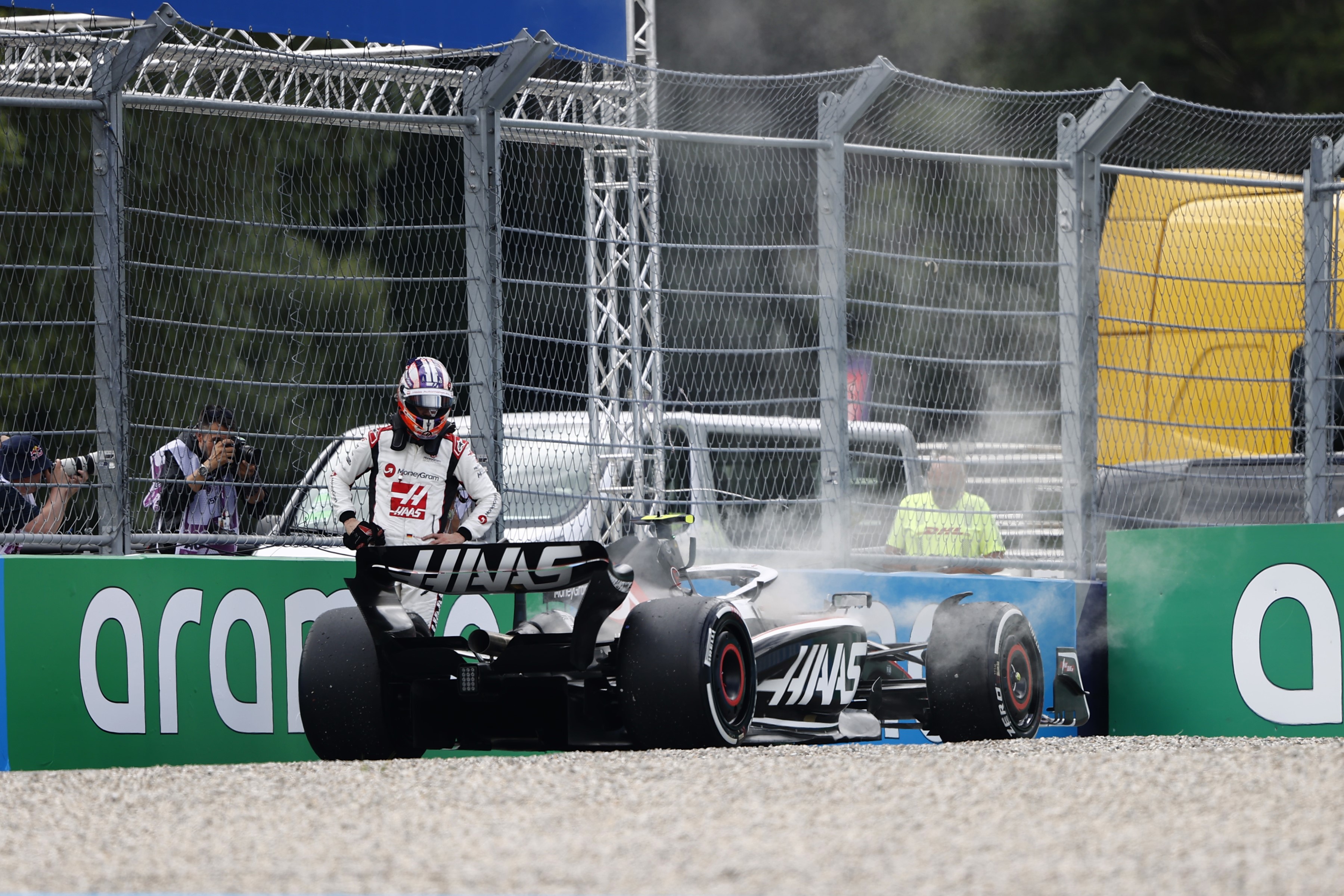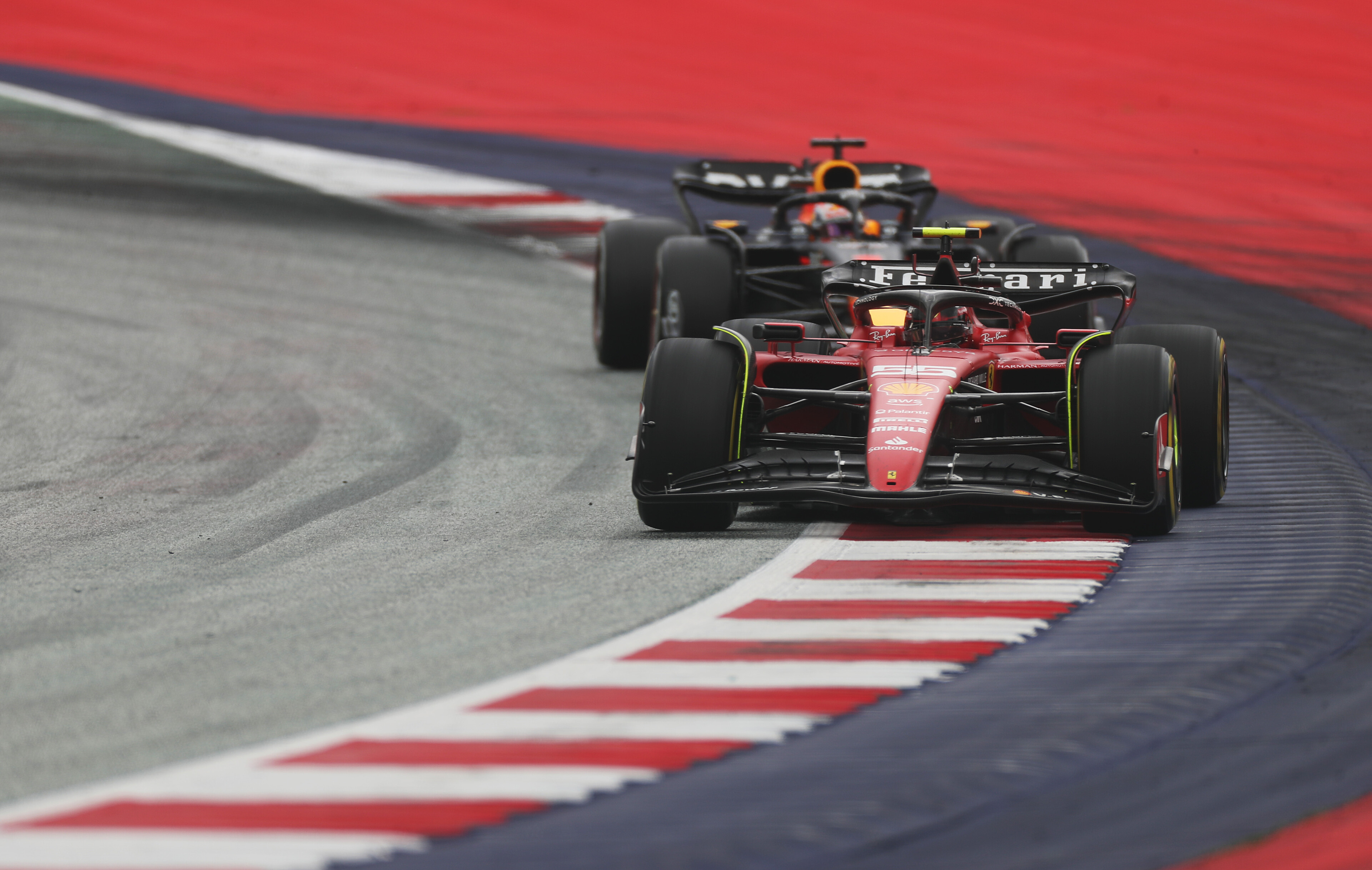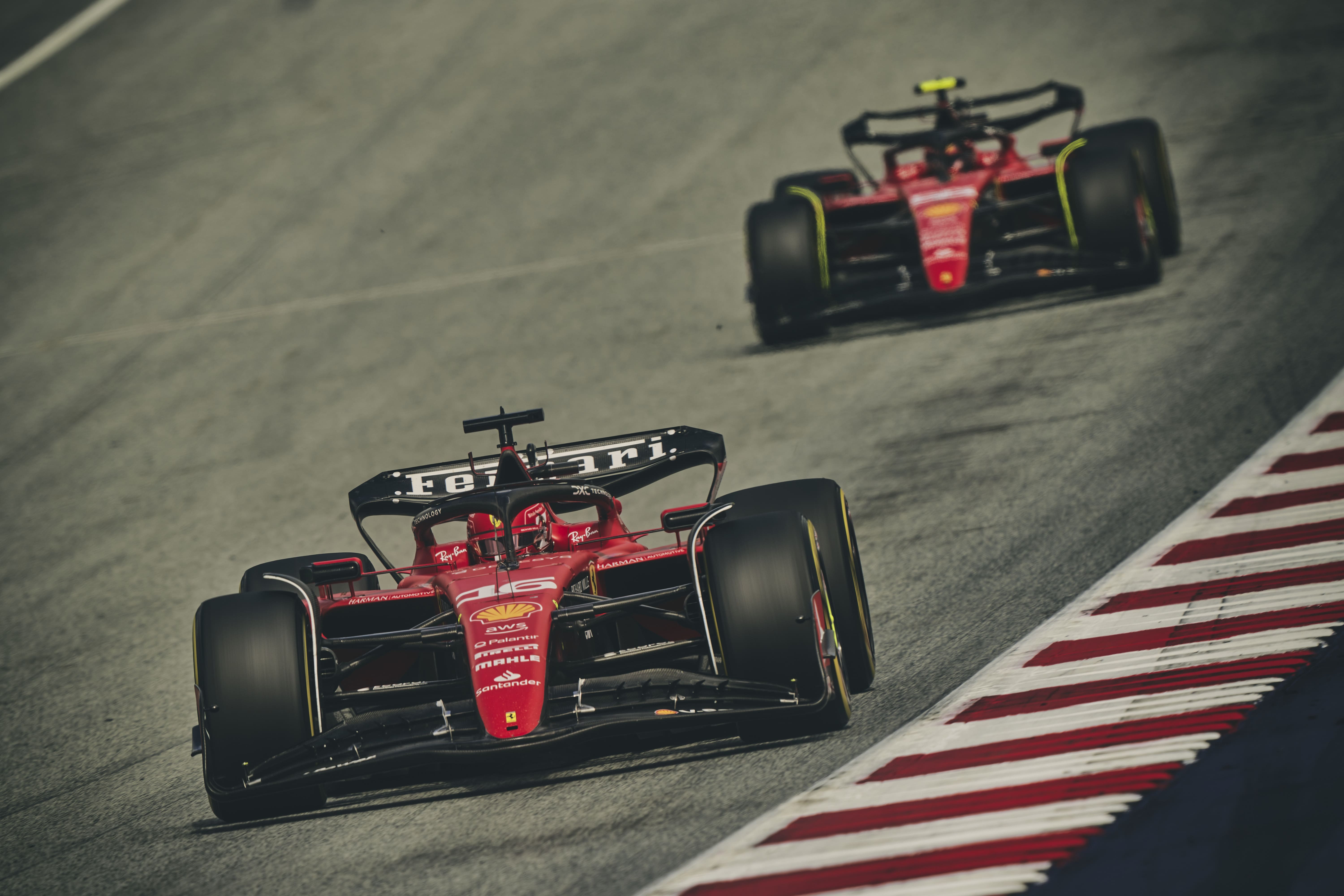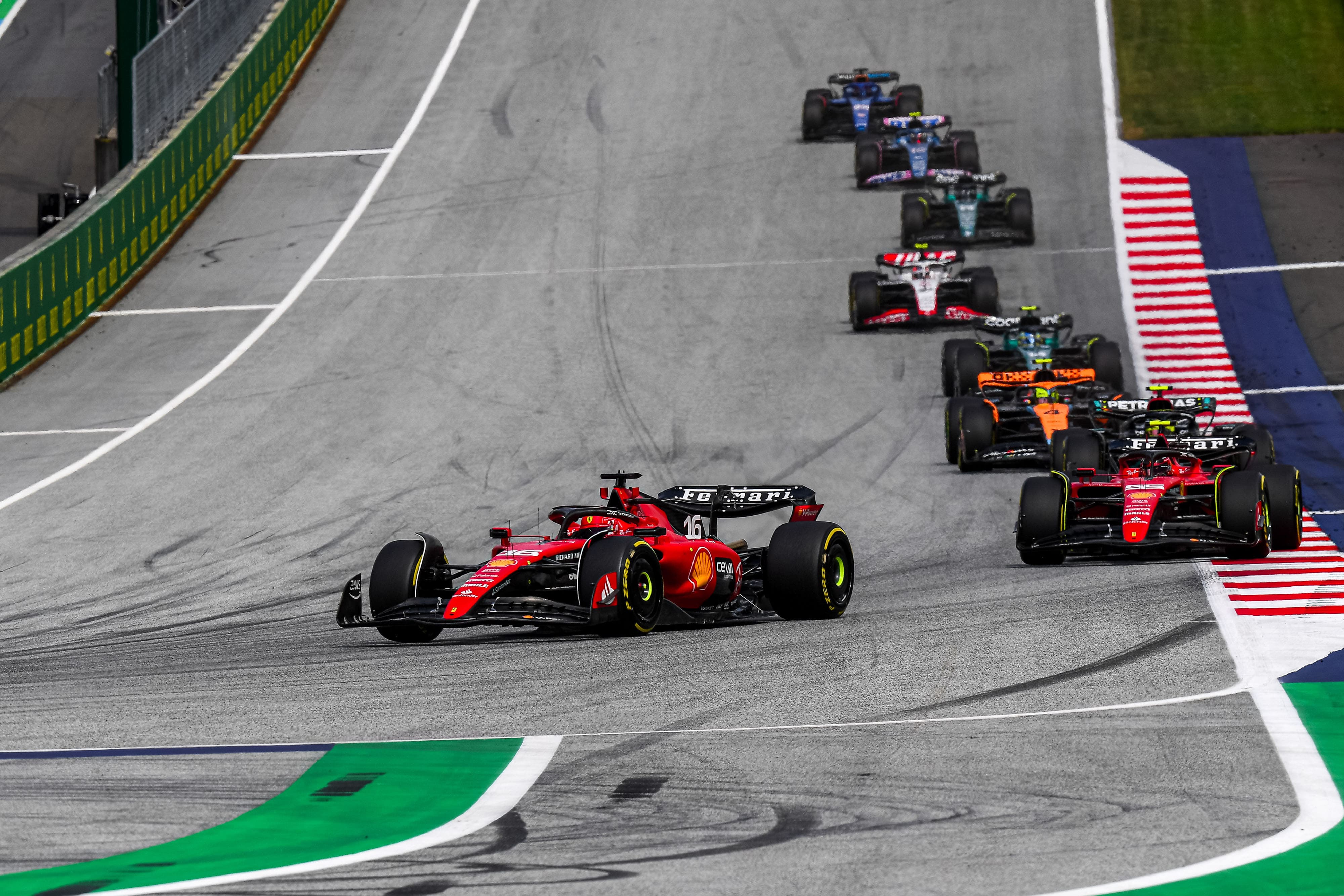Up Next

Carlos Sainz was left frustrated with a “compromising” pitstop that helped turn a potential first 2023 grand prix podium into a sixth place finish at the Austrian Grand Prix – but team boss Fred Vasseur says Ferrari was “convinced” the strategy was right.
Nico Hulkenberg’s stationary VF-23 triggered a virtual safety car at the end of lap 14, but it was only called when the top three drivers – Max Verstappen and the Ferraris of Charles Leclerc and Sainz – were in the final sector.

Third-placed Sainz was going through the Turn 9 (just before the pitlane entry) right-hander when he got the automatic VSC message. Leclerc – just ahead of Sainz on the road – was told to pit before being quickly told to ‘stay out’ when it was clear he’d already passed the pits.
Sainz, along with Leclerc, was then called into the pits at the end of the following lap and opened a gap to Leclerc ahead to not be slowed down in the pitlane.
Leclerc was able to re-emerge from his pitstop in second place, but the VSC ending and slow pitstops for both Sainz and Leclerc meant Sainz dropped behind both Lewis Hamilton and Lando Norris – who had been able to pit immediately after the VSC was deployed.
It also cost Sainz several seconds to Leclerc and he put the blame on that pitstop timing for his initial five-second penalty for track limits abuse, too.
Sainz ultimately finished within five seconds of eventual third-place finisher Sergio Perez on the road, even if Perez didn’t have to push after he’d cleared Sainz and a further penalty was coming Sainz’s way regardless.
“I was very quick on the first and second stints,” Sainz reflected.

“Obviously the second stint was already compromised by the first stop and pitting behind Charles, catching the virtual safety car ending, which meant we lost six or seven seconds of race time.
“It meant we lost positions to cars that I shouldn’t have lost to, which meant then I had to push on the medium to overtake them and got the track limits [penalty].
“My race was compromised from that point onwards.”
The flurry of post-race penalties also included an additional 10-second penalty for Sainz that demoted him from fourth to sixth.
That penalty was for a series of additional offences, some of which were made during Sainz’s ‘push’ phase on the mediums when he had to overtake Norris and Hamilton instead of focussing on protecting third place against Perez.
“I will need to analyse what we could have done there because clearly my race was compromised by that pitstop there,” he said.
“I guess the team had their reason to stop both cars. If not, I don’t know why.”
There was a hint also of lingering frustration from Sainz feeling contained in the opening stint – when he followed pre-race orders to stay behind Leclerc (who had earned that right by virtue of being ahead after lap one) instead of challenging him, as it looked like he had the pace to do.

When asked by TV crews about Sainz’s strategy criticism, team boss Vasseur said: “It’s not an issue as long as we have a clear discussion after the race.
“I think it was the right call, when you’re in the car you don’t have the whole picture. If you don’t [have] it, you complain afterwards.”
Vasseur said Ferrari was “convinced that it was a good strategy at that stage”.
It came at the end of what had been a solid weekend for Sainz, who had qualified third for the grand prix and had converted that same grid position into a sprint race podium on Saturday evening.
He was instead yet again left with an all-too-familiar 2023 feeling that his strong personal performance hadn’t translated into the result it deserved.
“Yes, when you take into account yesterday’s qualy, yesterday’s wet race, today’s first stint pace and second stint pace, attacking, defending, clearly I’m in a good moment personally with my driving,” he said when The Race asked him if Austria was one of his best 2023 weekends.
“I guess I’m also frustrated that I’m not maximising the points.”
The Race says
Josh Suttill

This hardly feels like the most offensive of Ferrari strategy calls. The logic was clear – ‘take the chance of the VSC to fit new tyres or we might get undercut by most of the top 10’.
And Vasseur is right the timing was awful. If the VSC comes out just 20 seconds earlier Ferrari could have safely pit both Leclerc and Sainz and had them come back out in second and third (or fourth behind Perez, who was yet to pit). Of course Ferrari could have helped itself with a pair of faster pitstops.
But the truth of what Ferrari chose was that lap 15 was very early for a first pitstop, particularly for an SF-23 that is well-known for being harsh on its tyres.
It was only going to make it a painful middle stint for Sainz in particular, who’d just lost all of the time he probably gained from pitting under the VSC versus normal conditions by having to slow down to let Leclerc do his pitstop first.
It would have surely made more sense for Ferrari to split the strategies. Pit Leclerc under the VSC as it did but leave Sainz out there with Verstappen and allow him to build up a tyre offset that could compensate for whichever positions he loses.

Perhaps then Sainz wouldn’t have faced the race-wrecking time penalties that he claims that early first pitstop pushed him to.
We’ll never know what difference it would have made – perhaps none if Sainz is still pushing to overtake cars after a late first stop – but he clearly feels strongly he’s not getting the results to match his own pace and the strategical choices are a big part of that.
And until those results come consistently Sainz is probably going to continue to feel “compromised” by strategy – and, more often than not, rightly so.






